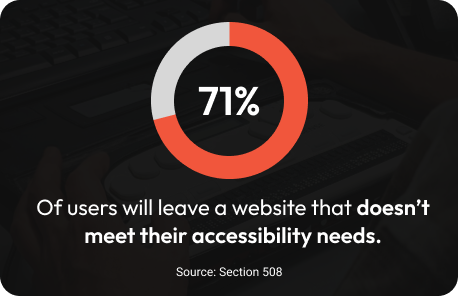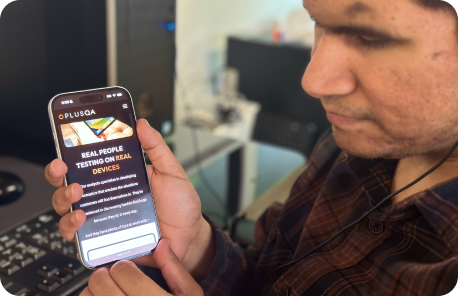Digital experiences dominate our daily lives. People now spend an average of six and a half hours online each day across devices and platforms. That's a massive opportunity, but also a serious responsibility. If your product isn't accessible, millions of users will hit barriers, close it, and not return. One study found that 71% of users will leave a website that doesn't meet their accessibility needs. And with more than 1.3 billion people worldwide living with disabilities, the scale of the challenge is impossible to ignore.

The good news is that there are specific actions you can take to ensure your digital products welcome everyone in, rather than leaving some people out.
What Is Digital Accessibility — and Why Does It Matter?
Accessibility means breaking down barriers so everyone can use your app, website, or software. It's not only about permanent disabilities. Accessibility helps with situational and temporary needs. For example, you might need to navigate with one hand while holding coffee. Or, you might want to read a screen outside in bright sunlight.
For developers, this means starting with inclusive design. Patching problems later will cost you time and money. Here are five simple ways to make your digital experiences easier for everyone.
#1: Support Keyboard Interfaces
Not everyone navigates by touch or mouse. Keyboards, screen readers, and switch devices must meet WCAG rules. These rules state that core tasks should work with keystroke input. Screen readers are vital for blind and low-vision users. Tools like Apple's VoiceOver, Google TalkBack, JAWS, and NVDA help them access information easily. They read content aloud, describe elements, and guide navigation. But this only works if developers label and structure those elements correctly.
#2: Enable Voice Commands
Hands-free support is vital. On mobile, that means ensuring tasks like logging in or completing a checkout can be done through Siri or Google Assistant. On desktop, it includes speech-to-text tools or browser voice navigation. For people with mobility limitations, it can be the only way to use a product. And for multitaskers, it's often the fastest.
#3: Make Interactive Elements Obvious
If users have to guess what's clickable or tappable, they won't guess for long. Use outlines, shadows, icons, and contrast to signal interactivity. And don't rely on color alone — colorblind users need alternative cues such as symbols or text. WCAG recommends a minimum contrast ratio of 4.5:1 for standard text and 3:1 for larger text.
#4: Optimize for Low Mobility
Design with reduced movement in mind. On mobile, ensure touch targets are at least 44x44 px for iOS or 48x48 px for Android. Place controls where users can easily reach them. Also, support both vertical and landscape orientations.
On desktop, provide keyboard shortcuts and other ways to reduce mouse movement. The same principle applies to desktop UIs: keep essential controls in easy reach without demanding constant mouse travel. If your product relies on gestures like drag-and-drop or shake-to-undo, always provide an alternative.
#5: Make Media Perceivable
Every piece of content should be understandable to everyone. Add alt text or accessibility labels to images. Provide captions or audio descriptions for videos. And respect system font settings so users can scale text as needed. Legibility relies on font and color. Use simple fonts and clear headings. Avoid vague link texts like "click here." When there's an error, be specific. For example, say, "Password too short — add one more character" instead of just "Error occurred."
Testing Digital Products for Accessibility
Designing for accessibility is a good first step. But you won’t catch every issue without thorough testing. Automated scans can find some issues, but real users and assistive tech provide the best insights. Tools like axe, WAVE, Apple's Accessibility Inspector, and Android's Accessibility Scanner are helpful starting points. The strongest results, though, come when QA testers and developers work side by side to validate fixes in real-time.

Why Accessible Design Pays Off
The real measure of accessibility is whether more people can use your product with ease. Every step — from supporting multiple input modes to making media perceivable — moves you closer to that goal. The result is a better user experience, stronger customer loyalty, and fewer risks related to accessibility.
At PLUS QA, we help teams achieve real progress. We offer hands-on accessibility testing, audits, and documentation services like ACRs and VPATs. Designing for inclusivity builds better apps — and opens the door for more people to use your product.
Want to learn more about accessibility laws? Check out our recent post on ADA and global accessibility compliance.
